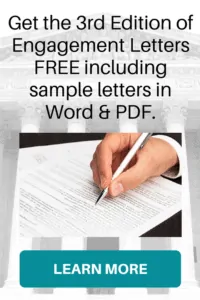Charitable Giving: Remembering the Basics
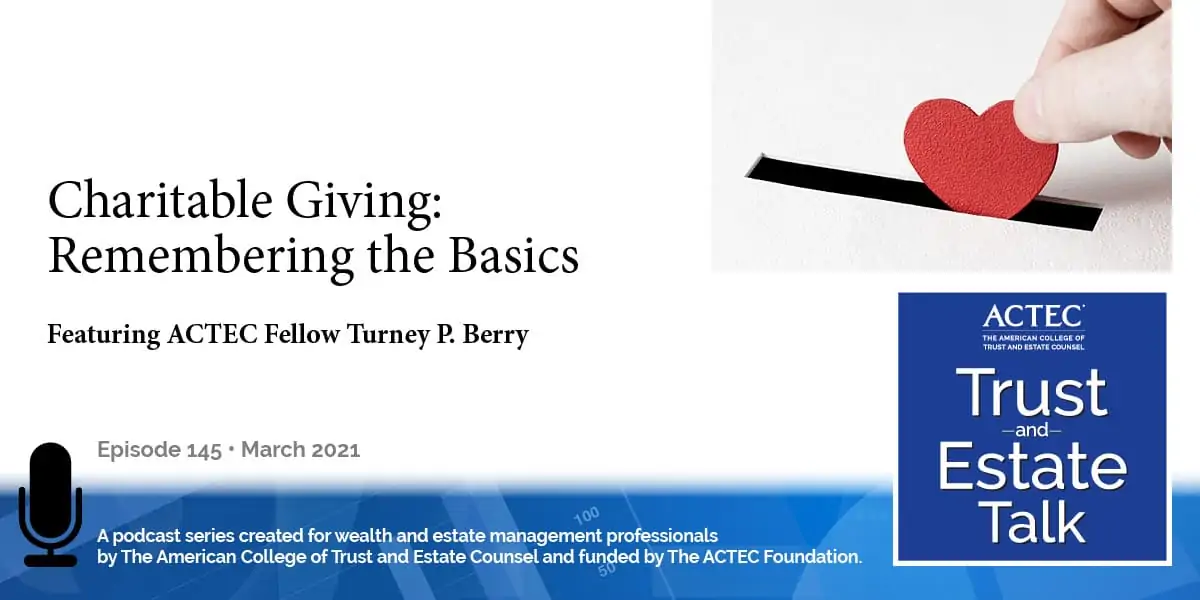
“Charitable Giving: Remembering the Basics,” that’s the subject of today’s ACTEC Trust and Estate Talk.
Transcript/Show Notes
This is Susan Snyder, ACTEC Fellow from Chicago. Charitable giving can be complicated, but it is always good to be reminded of the basics. And a series of cases in 2020 were good reminders that we must pay attention to those basics. To give us the details of this topic, you will be hearing today from ACTEC Fellow Turney Berry, from Louisville, Kentucky. Welcome, Turney.
Thanks, Susan. These cases, I think, are interesting this year. Most of the charitable cases we’ve seen, as you probably know, are conservation easement cases. And if you follow the conservation easement area, you’ve had a lot of reading to do this year.
But even if you don’t spend much time dealing with conservation easements, it’s important to realize that a lot of the litigation involving conservation easements and the issues identified have begun to spill over into other charitable areas and, I suspect, will actually go further and affect our regular planning in the years to come. And that has to do with some very basic concepts of appraisals and reporting basis and some other similar kinds of things. So, why don’t we take a look at a couple of cases.
Campbell v. Commissioner of Internal Revenue
One is a case called Campbell v. Commissioner, which is a Tax Court Memo Opinion. If you’d like to look at it, and you haven’t seen it, it’s TCM220-41. Campbell is an interesting case involving an unusual arrangement where what folks were going to do is pool resources and make a contribution of a vast number – several hundred thousand eyeglass frames. And you say, well how interesting can that actually be?
Well, it turns out to be an interesting case worth reading for a variety of reasons about what they were trying to do. But in particular, a question arose about the appraisal involved and, of course, these eyeglass frames. They were a very large gift, overall. Not one frame at a time. Eyeglass frames are not publicly traded. They’re not marketable securities. They’re not cash. So, they require an appraisal, of course. And the question is, can you just appraise them all as a batch – a really big batch? Do you have to break them down into different kinds? There were lots of different kinds of eyeglass frames here.
And the IRS took a very strict position, and the Court took a very strict position in saying, we want to see appraisals for each of these. We can’t just have a blanket appraisal. We need to be able to go in and look and say, was the appraised value of this particular item correct or not correct? And that, under the facts, would have been a very difficult condition to meet.
But what that tells us, it seems to me, is that the IRS is very strict these days about appraisals. There’s not really a rule of what we might call reasonableness involved. And part of that comes, again, from the conservation easement cases. What the IRS is really grumpy about, for the most part, in conservation easements are what it perceives as being valuation abuses. But to litigate the valuation of every conservation easement situation in the country is wildly expensive.
And so, what the IRS is attempting to do, it appears to me, at least, as a litigation strategy – not just me, its lots of other people – is to say well, let’s see if we can find some rules that the Treasury and the IRS have laid down that the taxpayer doesn’t follow. And one of those would be – are there defects in the appraisals?
So, Campbell is sort of an extreme example of that. But if you look at charitable cases over the years, and particularly easement cases, you’ll see a vast number of all kinds of appraisal problems. Sometimes, the property is not properly identified. Sometimes, five parcels are given, and only four are listed on the appraisal. There are just all kinds of things beyond broad, strategic valuation issues that appraisers miss.
Now, we’re only seeing a very small fraction, of course. Most appraisals are done perfectly well, and they pass muster, and off we go. But what this tells us, I think, is that we have a duty, as lawyers, to either review appraisals – and that, I think, goes across the board for gifts that our clients are making or whatever – either to look at the appraisals or specifically have our client understand that we are not doing that. And the client is dependent solely on the appraiser and/or on the accountant.
Loube v. Commissioner of Internal Revenue
Loube, L-O-U-B-E – Loube v. Commissioner, another Tax Court Memo Case 220-3, is another interesting situation. In Loube, what the donor did was give a house to a municipality. And the house was to be burned down. It was a contribution to the fire department. And those are always interesting cases – a perfectly legitimate technique. There was a full appraisal done. And there was one problem with the gift. And that is that the Form 8283 – that has to be submitted with a gift of non-marketable assets over $5,000.00 – the Form 8283 did not have all the relevant information.
What did it lack? Basis. It didn’t have the basis of the house. The taxpayer said, well, who cares? It’s in the appraisal. The IRS could find it. The IRS said that’s not good enough. And the Tax Court said, that’s right. We’re not going to send the IRS scrambling around through tax returns to find basis information. Basis information is a key factor in the IRS attempting to identify improper charitable gifts. The essence of it being that I have a basis of $100.00, and there’s property here worth $1,000.00. How did that happen, over how long a period of time? Et cetera.
So, the IRS likes to see basis front and center. And that’s a very strict requirement. The Court is giving you very little leeway on that. So, that’s a gotcha. That’s something we need to remember.
Dickinson v. Commissioner of Internal Revenue
Last, is another Tax Court Memo Case called Dickinson, D-I-C-K-I-N-S-O-N, 220-128 (Dickinson v. Commissioner). Came out this fall. The result is fine. The language is a little mushy – a little mushier than we might want it to be. The issue there is the assignment of income. A donor made a charitable gift to a donor-advised fund. And immediately thereafter, the stock was redeemed as part of a plan. And the question was, was the gift made too close in time? Was the plan already legally binding so that the donor was charged as if the property had been sold before the gift, and the donor was taxed on the income?
And we have, we like to think, of a bright line on that. The bright line being, could the charity have said no? If the answer is yes, then you don’t have an assignment of income. If the answer is no, then you do. Again, the result came out fine in Dickinson, but the language of the opinion says that the question is really whether the subsequent sale by the charity was “practically certain to occur at the time of the gift.” And that’s a fairly mushy standard and one that if you do a lot of work in this area, you’re not really happy to see. Many charitable gifts are practically certain to be disposed of immediately after the gift, but that doesn’t have anything to do with whether or not there should be an assignment of income.
So, Susan, back to you. These are basics – easy for us to forget in our complicated planning but very important to help our clients.
Very helpful. Thank you, Turney, for reminding us to pay attention to those basic components of charitable planning, including the appraisal lessons. And some of those lessons on appraisal basics may also apply to the valuation of non-charitable gifts. Thanks.
This podcast was produced by The American College of Trust and Estate Counsel, ACTEC. Listeners, including professionals, should under no circumstances rely upon this information as a substitute for their own research or for obtaining specific legal or tax advice from their own counsel. The material in this podcast is for information purposes only and is not intended to and should not be treated as legal advice or tax advice. The views expressed are those of speakers as of the date noted and not necessarily those of ACTEC or any speaker’s employer or firm. The information, opinions, and recommendations presented in this Podcast are for general information only and any reliance on the information provided in this Podcast is done at your own risk. The entire contents and design of this Podcast, are the property of ACTEC, or used by ACTEC with permission, and are protected under U.S. and international copyright and trademark laws. Except as otherwise provided herein, users of this Podcast may save and use information contained in the Podcast only for personal or other non-commercial, educational purposes. No other use, including, without limitation, reproduction, retransmission or editing, of this Podcast may be made without the prior written permission of The American College of Trust and Estate Counsel.
If you have ideas for a future ACTEC Trust & Estate Talk topic, please contact us at ACTECpodcast@ACTEC.org.
© 2018 – 2024 The American College of Trust and Estate Counsel. All rights reserved.
Latest ACTEC Trust and Estate Talk Podcasts
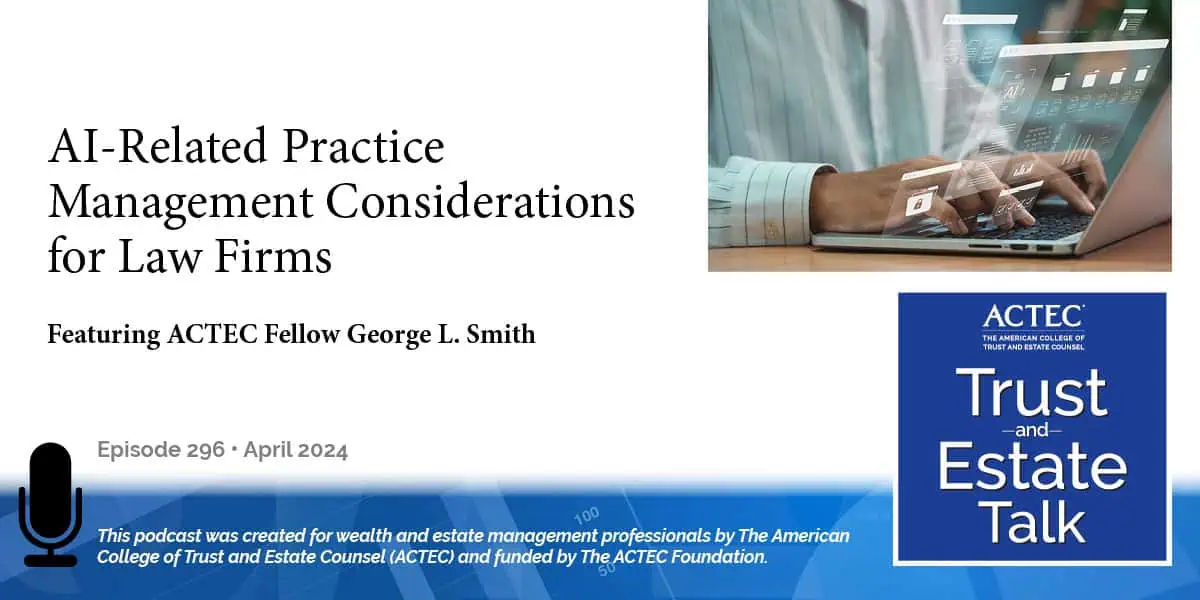
AI-Related Practice Management Considerations for Law Firms
A discussion for law firms about how to incorporate AI in their practice management, including staff considerations, the “billable hour,” and more.
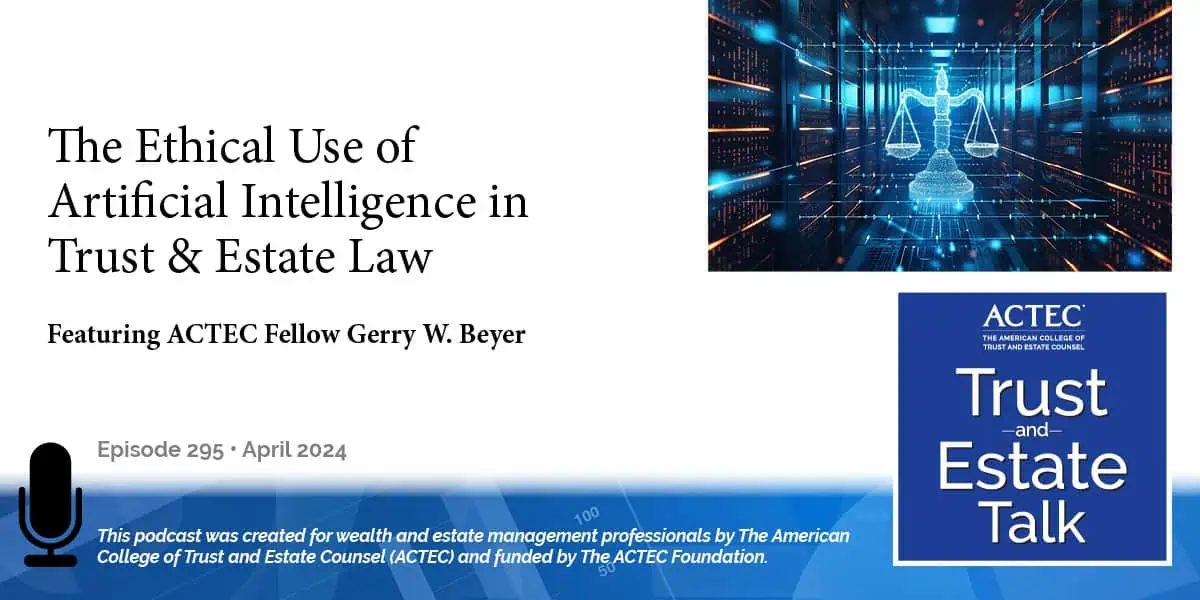
The Ethical Use of Artificial Intelligence in Trust & Estate Law
A law professor offers insights into the risks, rewards, duties and ethical considerations of lawyers using AI in their T&E practices.
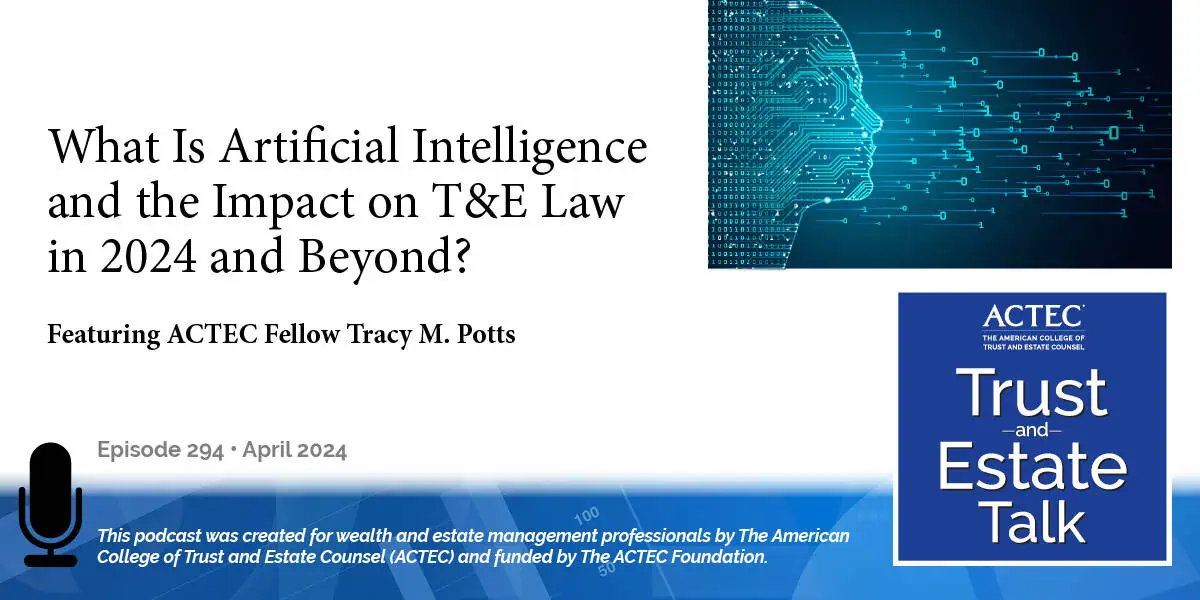
What Is Artificial Intelligence and the Impact on T&E Law in 2024 and Beyond?
A primer on the types and uses of AI, then a deeper dive into the impact on trust and estate law from types to applications to ethical considerations.

